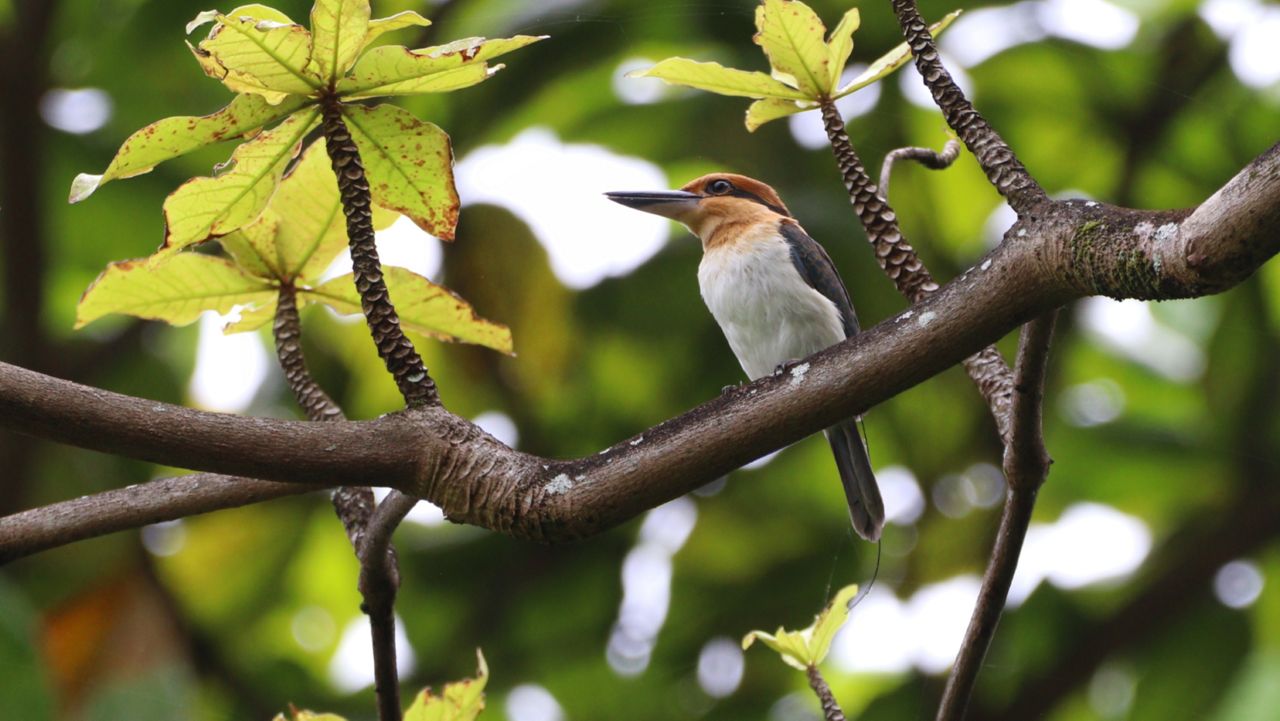CINCINNATI — Birds from the Cincinnati Zoo & Botanical Garden and elsewhere are sitting on the first Sihek eggs in nearly four decades. These eggs are on Palmyra Atoll, an island in the Pacific Ocean.
Sihek are also known as Guam kingfishers. Nine of them were released on The Nature Conservancy’s (TNC’s) Palmyra Atoll Preserve back in September last year, three of which came from the Cincinnati Zoo.
“This work on Palmyra is something I couldn’t have imagined witnessing in my lifetime, let alone being a part of,” said Cincinnati Zoo’s Senior Aviculturist Aimee Owen in a zoo press release. “We’re so excited that they’ve all come as far as they have and that Tutuhan, Cincinnati’s first egg, first chick produced, and the first chick of the entire project is now one of the first to produce eggs on the island. Her being “the first of firsts” of this ground-breaking conservation work is a milestone that simply fills us with pride, even beyond playing our role in the first place.”
The location of the Palmyra Atoll was chosen as their new home due to its relatively predator-free landscape and protected status. The release states that the birds have managed to learn to hunt and forage, pair up and, yes, even mate.
They zoo said this is the first time they’ve bred in the wild since the 1980s, when they went extinct from their native Guam.
“The short-term goal is to establish a fully self-sustaining Sihek population on Palmyra Atoll,” Owen said in the release. “The ultimate goal is to reestablish a Sihek population on Guam.”
You can’t necessarily expect a success on the first try.
The zoo cautions that the birds who bred were younger than one year old. They said it will probably take a couple tries before they have the skills to successfully hatch their chicks.
“Nonetheless, these eggs demonstrate both the tremendous resilience of these remarkable birds and the power of conservation to create a second chance for species on the brink of extinction,” the release reads.
So, how exactly did this species go extinct on Guam in the first place?
Well, according to the zoo, it was when the brown tree snake was introduced to the area on accident back in the 1940s. A conservation breeding program was started with just 29 of the birds that were brought in by Guam biologists as the species' population was plummeting.
“The Guahan Sihek continue to etch their story upon us, marking milestones with Tutuhan again at the forefront,” said Yolonda Topasna, Guam Department of Agriculture Division of Aquatic and Wildlife Resources (DAWR) Program coordinator, in the release. “Tutuhan was the first hatchling last year and now is the first confirmed to produce eggs. Her name means beginning and she showed signs of strength from the beginning, wanting to feed herself before being old enough to do so. Tutuhan challenged another female for Hinanao’s partnership and won! Now our pair take turns watching over their precious eggs.”
There are plans for more Sihek to be released on the island during the summer, the release states, and it is egg-laying season at various zoos, including in Cincinnati.
The zoo credits the successful release of these birds at Palmyra Atoll to collaborative efforts from the following organizations:
- Brookfield Zoo Chicago
- Cincinnati Zoo & Botanical Garden
- Disney’s Animal Kingdom
- National Aviary
- Sedgwick County Zoo
- Smithsonian’s National Zoo and Conservation Biology Institute
- Tracy Aviary
- ZSL’s London and Whipsnade Zoos
Here are some photos of these birds provided in the release:










